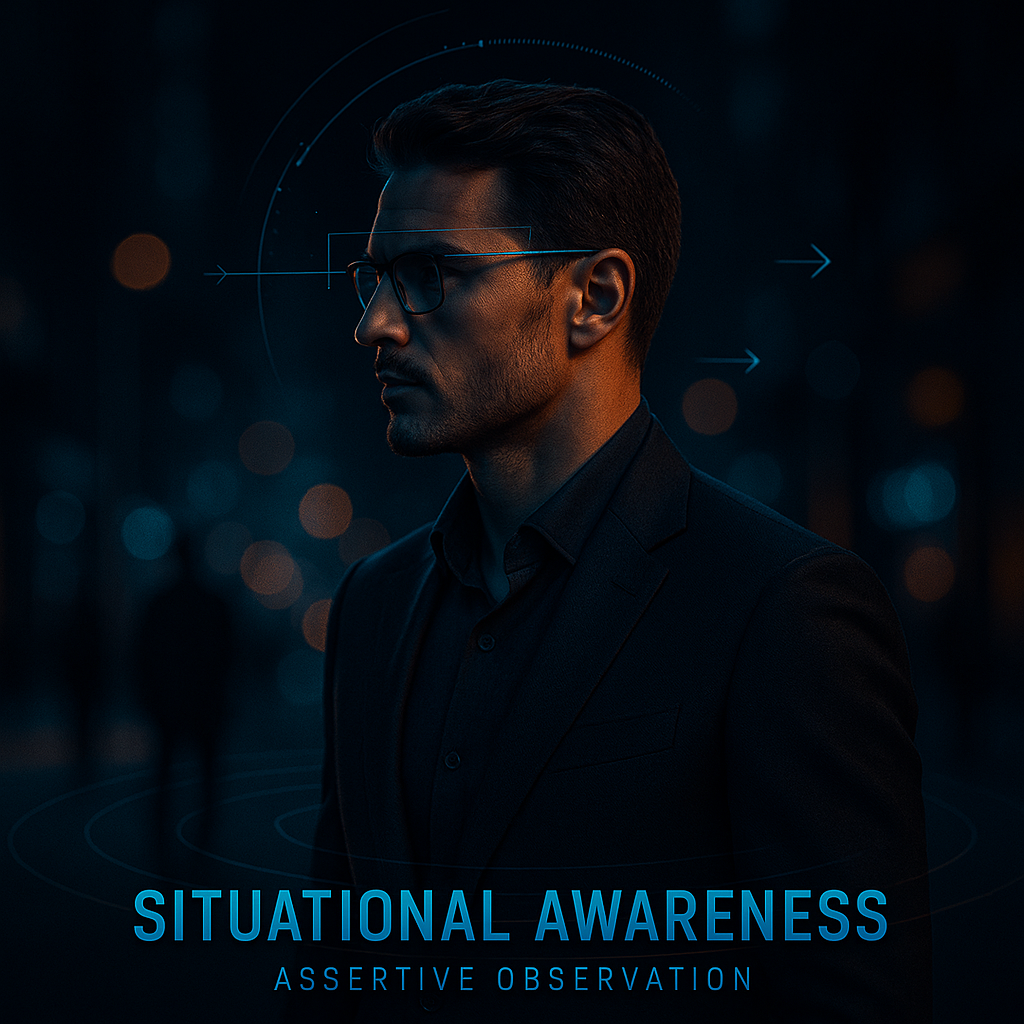No man drifts upward
Mastering Situational Awareness for Personal Protection - Part I of III
Discover the importance of situational awareness and behavioral projection in personal protection. Learn how to anticipate threats and mitigate risks with the assertive force method, ensuring you are always ready for anything.
Randy Miller
5/17/2025


Assertive Force Method: Personal Protection Series
Part I – Situational Awareness and Behavioral Projection
“Expect Nothing, Be Ready for Anything.”
For gentlemen committed to mastering their environment through the Assertive Force Method, personal protection starts far before a physical threat materializes. The cornerstone of true security is Situational Awareness—a disciplined state of assertive observation that anticipates threats and mitigates risks through vigilance and strategic decision-making.
In reality, most threats arise not because of an attacker’s strength, but rather because of the victim’s vulnerability or inattentiveness. Criminals, predators, and opportunists instinctively seek out targets they perceive as weak, distracted, or disengaged from their surroundings. Mastering the skill of situational awareness significantly reduces the likelihood of confrontation by projecting an image of alertness, readiness, and assertive strength.
The Power of Situational Awareness
Situational awareness is more than passive caution; it is an active discipline that involves systematically observing and assessing your environment. It begins with a simple yet powerful practice:
The Five-Second Scan:
Regularly (every few moments or whenever entering a new environment), perform a quick yet deliberate visual sweep of your surroundings. Observe people, their behaviors, exits, entrances, and anomalies. This brief scan can drastically reduce your vulnerability by enabling early detection of threats and giving you valuable moments to decide how best to respond or reposition yourself.
Practicing situational awareness consistently transforms it into a reflex, ensuring your subconscious mind continually monitors the environment, freeing your conscious mind to remain calm, strategic, and composed.
Behavioral Projection: Becoming a Hard Target
Alongside awareness, how you carry yourself significantly impacts your safety. Your posture, walk, and general demeanor convey critical messages to potential threats. Criminals and predators seek victims who appear easy, unsure, timid, or oblivious. Conversely, they avoid targets who display confidence, strength, and alertness.
To become a harder target:
Walk Purposefully:
Maintain a straight posture with shoulders back and head raised, demonstrating calm confidence.
Make Confident Eye Contact:
Periodically and briefly meet the eyes of those around you, signaling that you are alert, aware, and unintimidated—without appearing confrontational or aggressive.
Control Your Environment:
Position yourself strategically to avoid isolation, blind spots, or areas of limited visibility. Stay near exits, maintain sightlines, and keep distractions (like phones or headphones) to a minimum when in unfamiliar or potentially risky environments.
The subtle yet powerful message sent by assertive behavioral projection is clear: “I am not an easy target.”
Practical Drills for Immediate Implementation
Begin integrating situational awareness today with these foundational practices:
Peripheral Vision Exercise:
Without moving your head, attempt to clearly identify objects and movements in your peripheral vision, progressively improving your observational capacity.
Recall Drill:
Briefly scan an environment for five seconds. Then close your eyes and mentally list as many details as possible. Regular practice sharpens observational skills, strengthens memory, and enhances attention to detail.
Scenario Visualization:
Mentally rehearse potential threat scenarios and develop clear strategies for how you might respond, enhancing your readiness and reducing hesitation during an actual event.
Balancing Awareness and Composure
A gentleman who masters situational awareness maintains a careful balance: he is alert without paranoia, confident without aggression, and prepared without anxiety. Practicing assertive observation regularly conditions you to respond strategically rather than react impulsively.
This approach aligns perfectly with the Assertive Force Method’s foundational tenets of strategic emotional mastery, safeguarding one’s sanctum, and assertively projecting strength without unnecessary confrontation.
Summary of Part I
Situational awareness is the cornerstone of personal security.
Behavioral projection significantly reduces perceived vulnerability.
Immediate drills develop practical, daily skills for early threat detection.
Mastering awareness fosters emotional and strategic control.
End of Part I of III
Mindset
Wealth
Legacy
© 2025, All rights reserved upon all original content presented by Randy Miller. Re-use of content within context and link to website is noted within re-use is hereby granted.
